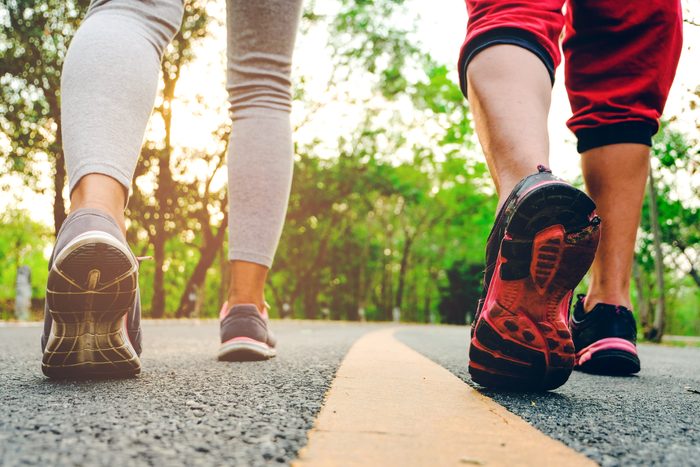
Whether you’re just moving from Point A to Point B or getting outside to decompress from the day, more of us are growing aware that walking is some of the best exercise you can get. What most of America’s 145 million walkers aren’t aware of, says Morgan Busko, MD, is that poor technique and common walking mistakes can stress your musculoskeletal system.
Dr. Busko is a sports medicine physician at NewYork-Presbyterian/Columbia University Irving Medical Center who says that over time, common walking mistakes can lead to issues like pain or injury in your neck, back, shoulders, hips, and knees.
Dr. Busko and fellow orthopedics doctors say paying attention to how you walk—and making minor corrections to your form and practice—can go a long way in helping to avoid these issues. Follow these insights so that every step you take moves you closer to all the health benefits of walking (like heart health, strong bones, and a clear mind to name a few) for the long-term.
10 Best Walking Shoes for Your Feet, According to Podiatrists
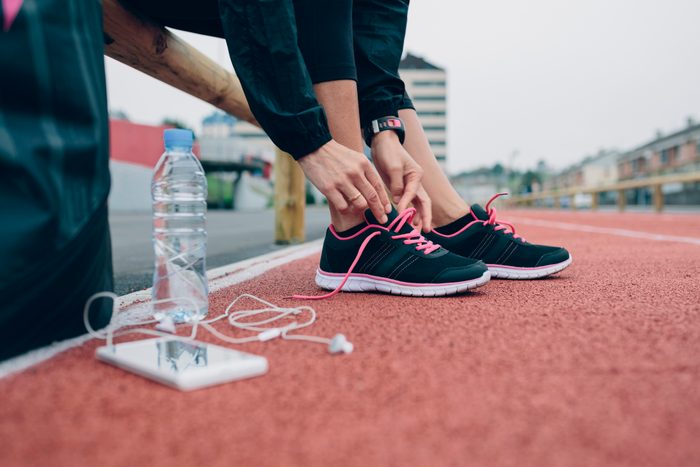
The most common walking mistakes
Wearing the wrong shoes
Proper shoes help prevent overuse injuries in the foot and ankle, explains Jared T. Lee, MD, an orthopedist and Medical Director of The Steadman Clinic in Aspen, CO. “In general, a good walking shoe has high-quality cushioning that allows for foot flexion, and I always recommend a rubber sole,” he says.
Dr. Busko adds that it’s important to replace footwear that’s visibly worn down, too: “I recommend getting a new pair of walking shoes after about 300 miles of wear.”

Looking down
Dr. Lee says a common technical mistake people make is walking with too much forward trunk bend, or hip flexion. This puts extra pressure on your knees and ankles to keep balanced and “leads to a plodding gait [walking pattern], instead of a fluid gait that allows the ground reaction forces to be dissipated throughout the [walking] cycle,” he says.
The cause is usually simple: You’re looking at your feet instead of farther forward.
4 Runner’s Knee Exercises That May Help Pain Around the Knee Cap
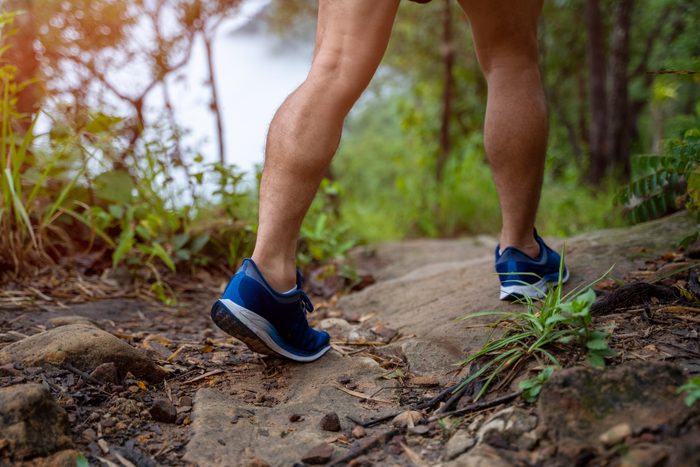
Overstriding
Taking longer steps may seem like an efficient way to intensify your walk, but it actually puts more stress on your musculoskeletal system, says Zachary McVicker, MD, a sports medicine orthopedic surgeon at Paley Orthopedic and Spine Institute in West Palm Beach, FL. A long stride forces your leg to go stiffer and straighter, which reduces your body’s ability to absorb force from the ground. A good gait is balanced and fluid—not awkwardly long—and should flow effortlessly, he says.
If you’re trying to pick up your pace, aim for quicker steps, not longer ones.
Here’s the Average Walking Speed—and What It Says About Your Health
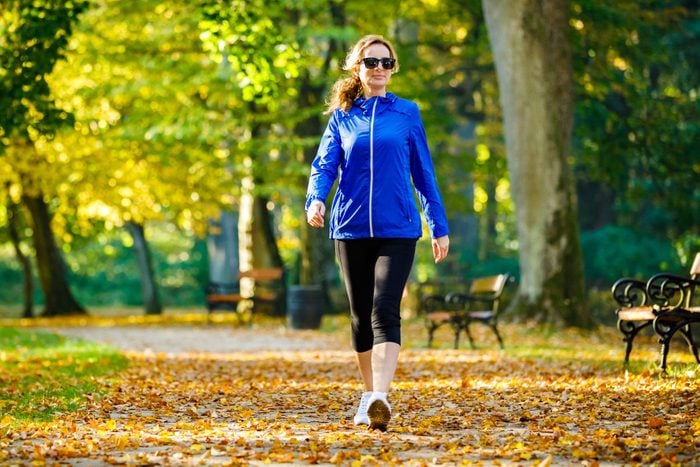
Having poor posture
Maintaining good posture when you walk is one of the most important rules for a healthy gait, Dr. McVicker says. While keeping your head up (and not looking at your feet) is a good start, if you’re still slouching as you walk, this can put too much extra pressure on your feet and joints and affect your balance and mobility over time.
To make your posture even healthier, The Healthy @Reader’s Digest’s Medical Review Board co-chair Latoya Julce recommends holding your lower abs in anytime you’re standing, walking or working out. “By doing this, it allows the hip flexors to stretch and take strain off the lower back,” she explains. “This daily routine will help with posture and walking with great form.”
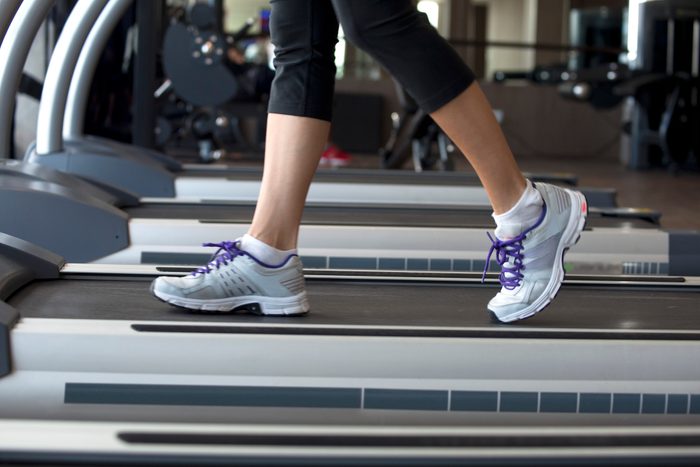
Never walking outside
We are all about treadmill walking when the weather’s freezing and paths are slick. (In fact, here are the best small treadmills for just about any space.) But when winter’s thaw is over, taking a walk outside comes with a range of mental and physical benefits: Research has shown that spending time in nature lowers stress, improves mental health, and is associated with a lower risk of most chronic diseases.
It turns out, walking outdoors has specific benefits to your musculoskeletal system and gait, too—says Dr. Lee: “Natural surfaces have less ground reaction forces (which means less stress on your body) but will also exercise small balancing muscles from your ankle all the way to your core.”
Walking for Exercise? 8 Tricks to Make Your Daily Walking Habit Even Healthier
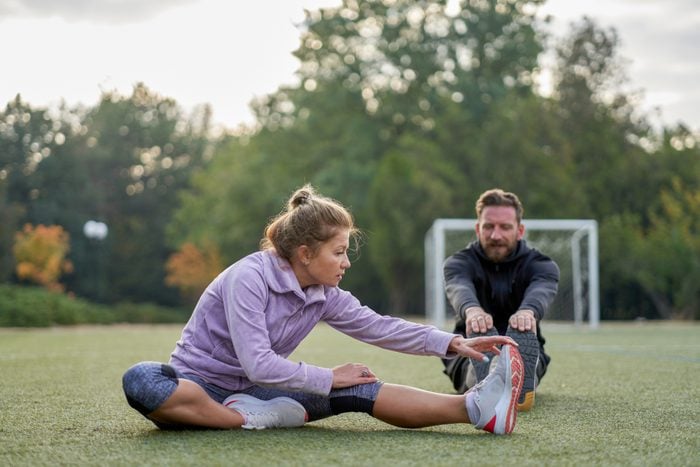
Not stretching
If you have too much stiffness in your hips, spine, or pelvis, this can contribute to bad gait habits like leaning forward, looking down, or slouching, Dr. Lee explains. Because walking is a repetitive motion, these habits will get reinforced if you don’t make a little time to open your joints and improve your flexibility. Dr. Lee recommends regularly stretching your hips, calves, quadriceps, hamstrings, and lower back.
If you aren’t seeing improvements, check in with a physical therapist to address any underlying issues.
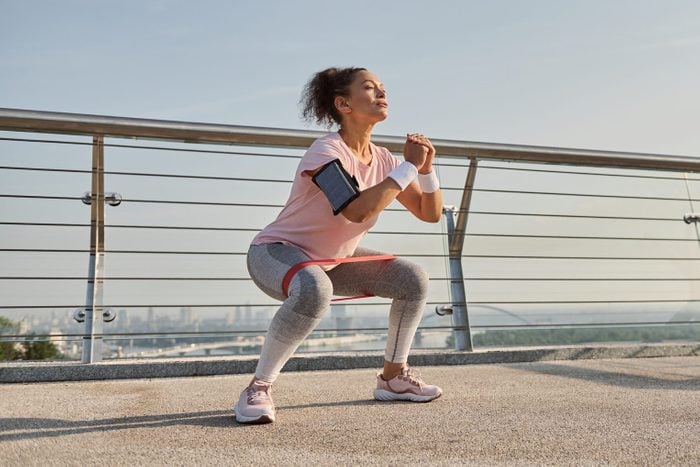
Overlooking muscular strength
Walking is a great, low-impact exercise to help you meet movement goals. But because walking seems like an “easy” exercise, Dr. Busko says a big mistake is doing “too much too soon” or varying the intensity, terrain, or duration of their walk too abruptly.
To avoid both injury and bad gait habits, it’s important to build strength in the foundational muscles used for walking, she explains. “I recommend complementing any walking routine with resistance band and body weight exercises that focus on strengthening the deep muscles of the core, the smaller but very important muscles of the buttock, and the legs.”
A Trainer Designed This Simple Resistance Band Leg Workout for Noticeable Results
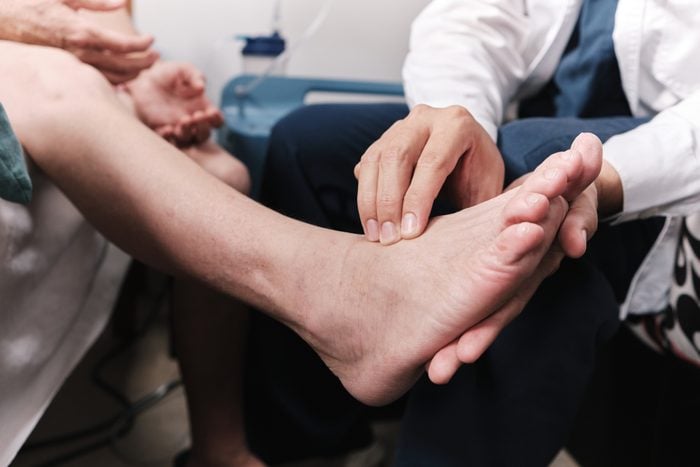
Not treating flat feet
Flat feet are relatively common—one 2017 study noted that about 30% of people have no visible arch in their foot when they stand.
While flat feet may not cause problems for everyone, the condition can present long-term problems with walking mechanics, Dr. Lee says, such as ankle and tendon strain. If you have any pain or discomfort when walking, seeing a specialist to fit you with orthotics (like shoe supports) can help prevent issues from developing.
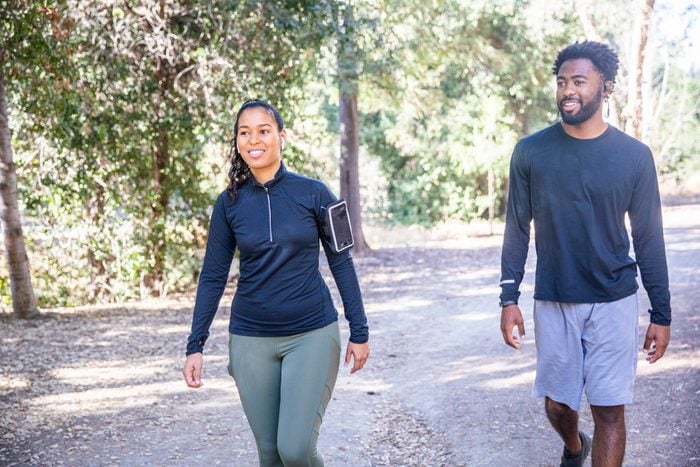
How to tell if you have a healthy walk
You can do a simple self-assessment to check in on your gait, Dr. Lee says. Consider these signs of good walking habits:
- Do you walk with your shoulders slightly back, looking forward, with your chin level?
- Do you have a light heel strike and get near full knee extension mid-gait?
- Are you pushing off your front foot?
- Is pressure centered on your foot?
“Another telling sign of bad walking habits is abnormal wear pattern on the sole of your shoe or breakdown in the foam of the shoe,” Dr. Lee says. A good wear pattern is pretty symmetrical, showing even amounts of wear under your heel and under the ball of your foot.
But if you have any concerns over your walking habits, “working with a physical therapist specializing in gait can provide very useful feedback for determining proper gait, stride length, and pace.”
Stay up-to-date on health and wellness with The Healthy @Reader’s Digest newsletter and follow The Healthy on Facebook, Instagram, and Twitter. Keep reading:

